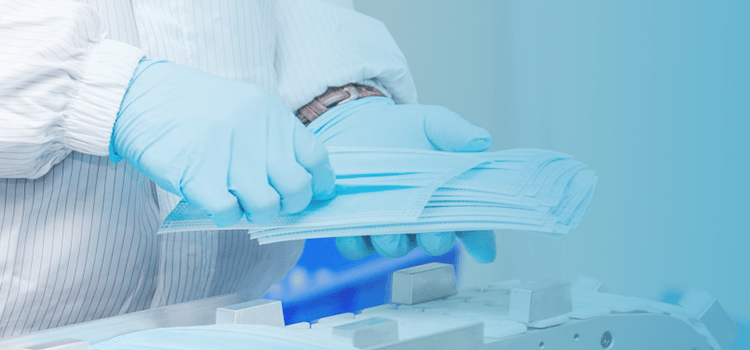


Views: 0 Author: Edmund Publish Time: 2023-09-25 Origin: Site









**Introduction**
Lab coats are an essential garment in many professional settings, especially in the fields of healthcare, laboratory research, and manufacturing. While traditional lab coats have been made from various materials, nonwoven lab coats have gained popularity due to their unique characteristics and benefits.
**Nonwoven Lab Coats: An Overview**
Nonwoven lab coats are a modern alternative to traditional woven lab coats. They are constructed using nonwoven fabrics, which are made by bonding or felting fibers together without weaving. This results in a fabric that is both durable and resistant to liquids and contaminants. Nonwoven lab coats offer several advantages:
1. **Fluid Resistance**: Nonwoven lab coats are designed to repel liquids, making them ideal for environments where spills and splashes are common.
2. **Breathability**: Despite their resistance to liquids, nonwoven lab coats are breathable, ensuring comfort for the wearer even during extended periods of use.
3. **Disposable Option**: Many nonwoven lab coats are disposable, which is convenient for environments with high contamination risks.
**Types of Nonwoven Materials**
Nonwoven lab coats can be crafted from various nonwoven materials, each with its own set of characteristics. Here are some common types:
1. **Spunbond Polypropylene (SBPP)**: SBPP lab coats are lightweight, breathable, and cost-effective. They are suitable for general use in laboratories and medical facilities.
2. **SMS (Spunbond Meltblown Spunbond)**: SMS lab coats combine the strength of spunbonded and meltblown materials. They offer excellent fluid resistance and are often used in surgical and cleanroom environments.
3. **Polyethylene (PE) Coated**: These lab coats are coated with a layer of polyethylene, providing an extra barrier against fluids and chemicals. They are commonly used in high-risk situations.
4. **Tyvek**: Tyvek lab coats are made from a unique spunbonded material that is tough, durable, and resistant to punctures and tears. They are often used in industrial settings.
**Understanding GSM in Conventional Lab Coats**
GSM, or Grams per Square Meter, is a measurement of the weight or density of fabric used in lab coats. It is an important indicator of the fabric's thickness and durability. Here are some typical GSM values for conventional lab coats:
1. **Lightweight Lab Coats**: These lab coats typically have a GSM ranging from 20 to 40. They are designed for minimal protection and short-term use, often in situations where one-time disposal is necessary.
2. **Medium-Weight Lab Coats**: Lab coats in this category generally have a GSM between 40 and 60. They offer moderate protection and are suitable for laboratory and healthcare settings where durability is needed for a limited time.
3. **Heavyweight Lab Coats**: Heavyweight lab coats have a higher GSM, often exceeding 60. Their GSM values may range from 60 to 100 or more. These lab coats are designed for high-risk environments where maximum protection and durability are paramount.
It's essential to select a lab coat with an appropriate GSM value depending on the specific requirements of your work environment. In high-risk settings, opting for a heavyweight lab coat with a higher GSM can provide the necessary protection, whereas lightweight lab coats with lower GSM values are more suitable for tasks where disposable options are preferred.
**Additional Information about Lab Coats**
1. **Sizing and Fit**: Lab coats come in various sizes and styles to accommodate different body types and preferences. It's important to choose a lab coat that provides a comfortable and secure fit.
2. **Closure Options**: Lab coats can feature different closure options, including buttons, snaps, or zippers. The choice of closure can affect ease of use and contamination prevention.
3. **Compliance and Standards**: In healthcare and laboratory settings, lab coats often need to comply with specific standards and regulations, such as those set by OSHA or CDC.
4. **Care and Maintenance**: Proper care and maintenance of lab coats, including regular washing and sterilization, are essential to ensure their effectiveness in protecting wearers.
**Conclusion**
Nonwoven lab coats have become a preferred choice for many professionals due to their durability, fluid resistance, and breathability. Understanding the various nonwoven materials and GSM values associated with lab coats can help individuals and organizations make informed decisions when selecting the right lab coat for their needs. Whether in healthcare, research, or manufacturing, lab coats play a vital role in ensuring safety and hygiene in the workplace.
Optimizing Sterilization Practices with Self-Sealing Sterilization Pouches: A Comprehensive Guide
Unlocking The Benefits of PE SPA Liners: A Comprehensive Guide To Relaxation And Wellness
The Ultimate Guide To Nonwoven Fabric Shopping Bags: Embracing Sustainability in Every Purchase
The Ultimate Guide To Nonwoven Adult Diapers: Comfort, Dignity, And Freedom
Exploring The Versatile World of Nonwoven Fabrics: Types, Characteristics, And Applications
Discover The Perfect Boot Covers for Every Task: A Comprehensive Guide
The Ultimate Guide To Choosing The Perfect Shoe Covers for Every Need
In-Depth Analysis of ASTM F1670 And F1671 Testing for AAMI Level 4 Surgical Gown Certification